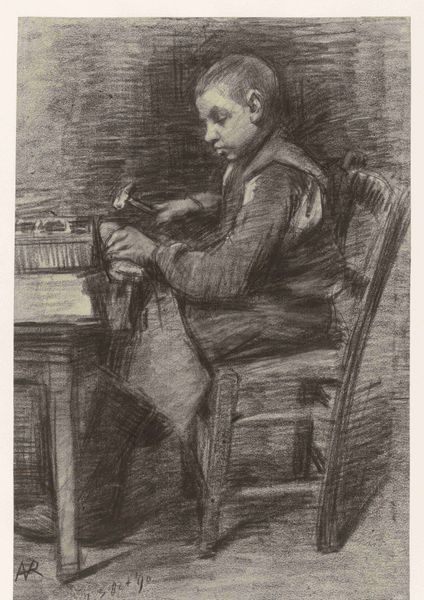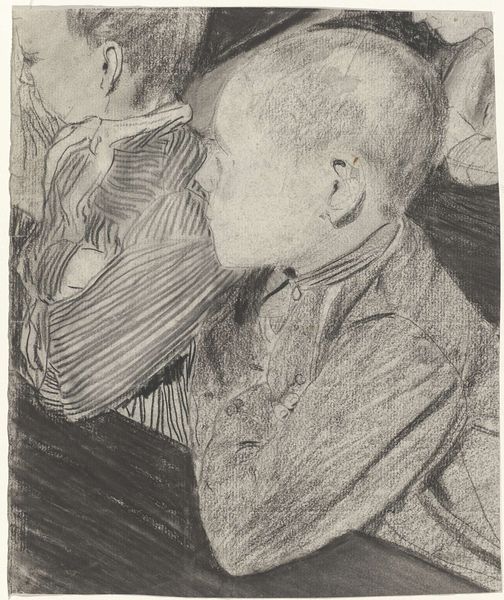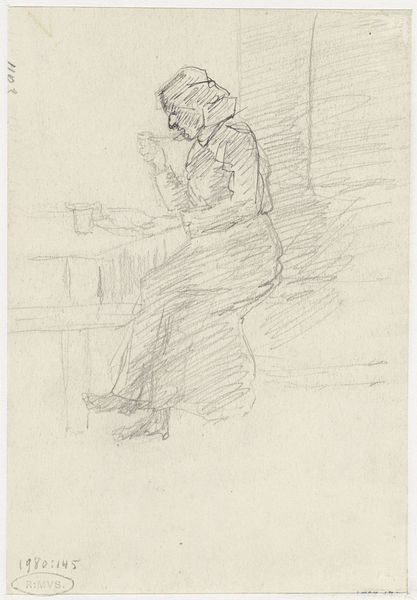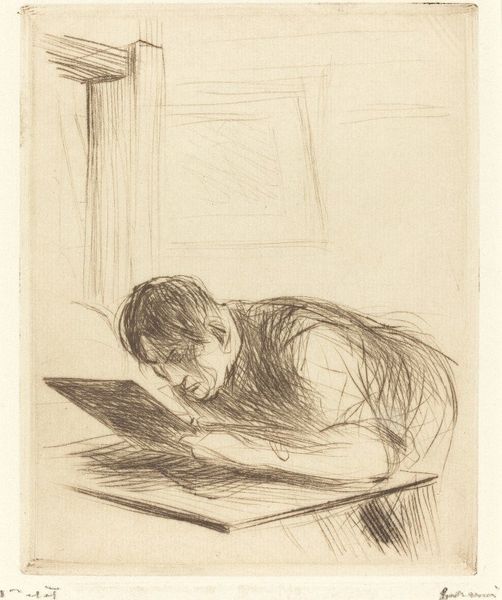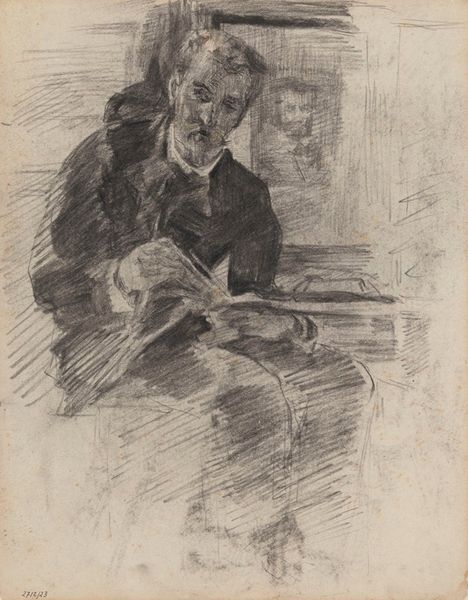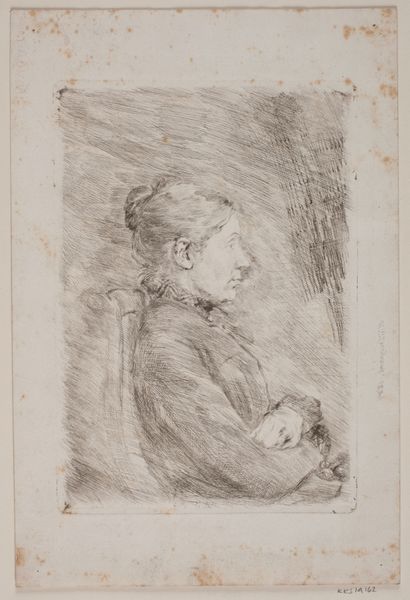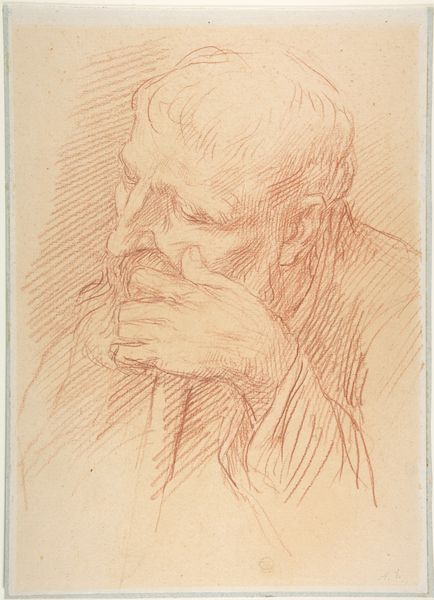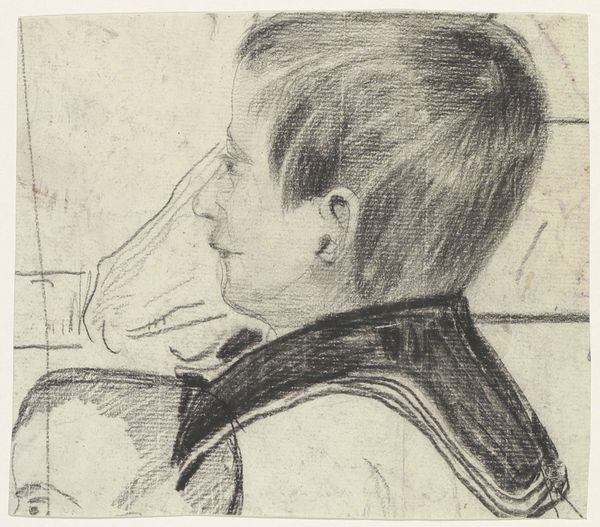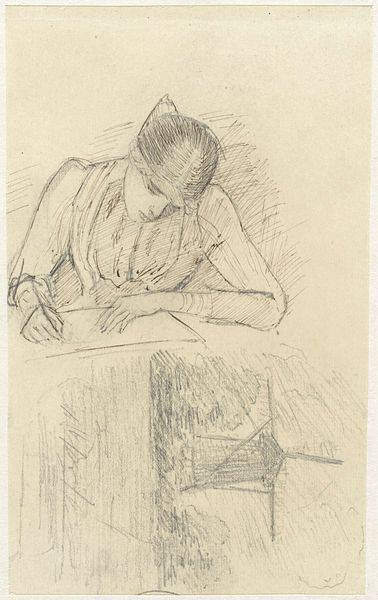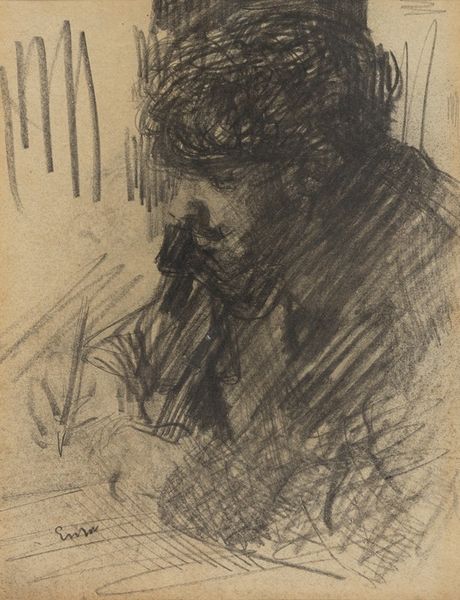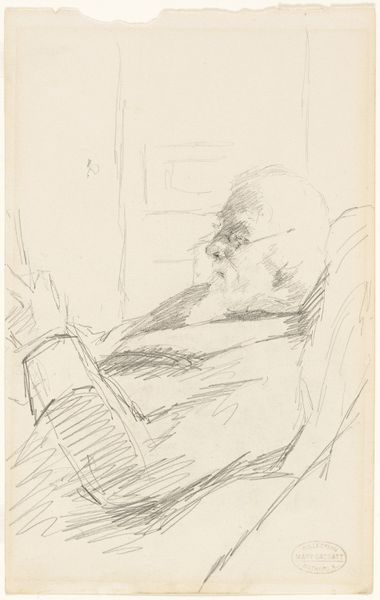
Portrait of the Artist's Mother 1899
0:00
0:00
drawing, pencil
#
portrait
#
drawing
#
figuration
#
pencil drawing
#
pencil
#
portrait drawing
#
post-impressionism
Dimensions: Sheet: 6 3/4 x 4 in. (17.1 x 10.1cm)
Copyright: Public Domain
Curator: Henri-Edmond Cross's "Portrait of the Artist's Mother," executed in 1899, offers us an intimate glimpse through the subtle gradations of pencil on paper. What's your initial impression? Editor: Melancholy. The soft greys, the bowed head... it speaks to a quiet dignity, perhaps even resignation. I wonder about her life, her experiences. Curator: Observe how Cross utilizes short, deliberate strokes to build form and volume. Notice the contrast between the more defined facial features and the looser rendering of her clothing, guiding the eye to her face. It adheres to conventions of the profile. Editor: While technically proficient, portraits are never neutral. This one particularly seems ripe for a more critical reading. The artist depicting his mother… what power dynamics are at play here? Consider the gaze – or lack thereof – her averted eyes seem almost indicative of her societal position, confined to the domestic sphere, perhaps unheard. Curator: Perhaps. Or is it simply a study in character? The subtle shading around the eyes suggests a depth of emotion, wouldn’t you agree? There is attention to light and shadow, building depth of expression. Cross uses chiaroscuro here. Editor: It could be seen as an evocation of domesticity, but to ignore the patriarchal constraints placed on women, particularly mothers, at the turn of the century feels reductive. Aren't we compelled to wonder about the unspoken narratives, the hidden burdens beneath the surface? We see many depictions of mothers – but often mediated through the male gaze. Curator: A valid point, and certainly open to interpretation. One cannot dismiss context altogether, I will concede. I maintain however that Cross has also successfully represented universally relatable tenderness through visual means. Editor: I see your point. It speaks, regardless of its creator's intent, to a generation of unacknowledged lives and sacrifices. That is art. Curator: Ultimately, the drawing compels us to pause, to reflect not just on the depicted subject, but on the medium itself and how that very translation occurred across the artist's mind and through his hand to paper. Editor: Exactly – a reminder of our shared history and its lasting impact, and how identity is defined by broader power structures. Thanks to this interpretation, this piece speaks in multiple voices.
Comments
No comments
Be the first to comment and join the conversation on the ultimate creative platform.
